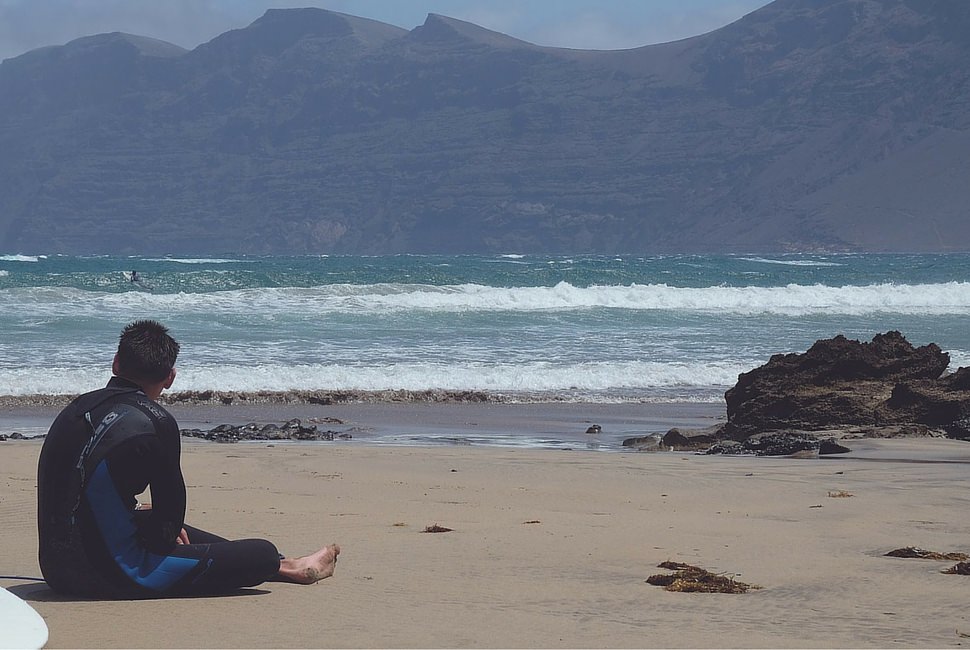Last Updated on October 20, 2024 by Afsar
When it comes to kayaking, having the right gear is essential for comfort, safety, and an enjoyable experience on the water. One of the most important pieces of equipment for kayakers is a wetsuit. Whether you’re paddling through serene lakes or navigating the twists and turns of a fast-moving river, a wetsuit is designed to keep you warm and protected from the elements.
Wetsuits work by trapping a thin layer of water between your skin and the suit, which your body then warms up, acting as a barrier against the cold. This makes them ideal for kayaking in various weather conditions, from chilly mornings to breezy afternoons. They also provide protection from scrapes, bumps, and even harmful UV rays.
Choosing the right kayaking wetsuit involves considering factors like fit, thickness, material, and design. It should be snug enough to prevent water from entering but comfortable enough to allow for a full range of motion. In this article, we’ll explore the different types of wetsuits available, tips on selecting the right one for your adventures, and why every kayaker should consider investing in this essential piece of gear. So, grab your paddle, put on your wetsuit, and let’s get ready to explore the water!
Table of Contents
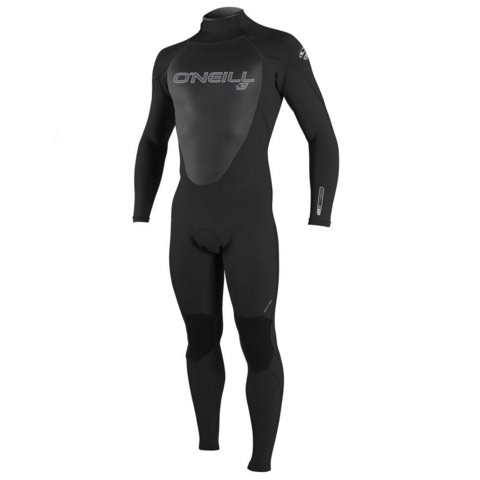
O’Neill Wetsuits Men’s Epic 4/3mm Full Suit
This is the best full-body wetsuit for cold weather. Made of 90% polyester this wetsuit can be used at 52°- 58° (Fahrenheit) temperature. Its thickness level is 4/3mm; thus it can help you in the cold weather. Thanks to the 100% ultra flex neoprene with FluidFlex firewall for the great insulation. To protect and increase your activity, ty it comes with a seamless lumbar design along with a Krypto knee padz. Unlike most wetsuits, this one has a good fittin. In the neck, it might look tight, but it works perfectly when worn. This wetsuit’s seamless paddle zone is placed strategically to increase efficiency. Its internal thermal chest panel increases the insulation to keep & increase your core body heat.
Pros:
- Seamless paddle zone
- Great insulation
- 4/3mm to beat 58°- 63° weather
- Adjustable and watertight super seal neck
- Great fit
- Excellent value for the price
Cons:
- getting off is slightly annoying

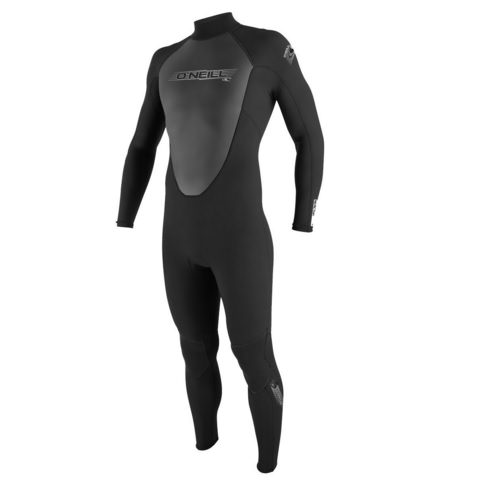
O’Neill Wetsuits Men’s Reactor 3/2mm Full Suit
Best Wetsuits for Men: This is a full-body suit wetsuit for men. This wetsuit from O’Neil uses theirFluidFlex design in the shoulder & sleeve to provide a great range of motion. This wetsuit uses an adjustable super seal neck to provide great comfort to the users. Most of the time full body wetsuit get torn in the knee, but thanks to the krypto knee padz which will protect your knees and thus increases the durability. This full body wetsuit comes with a 3/2 mm range of neoprene. It provides a minimal bulk design that protects the users and enables them to move finely.
Pros:
- Single superseal neck
- 360-degree smooth skin interior
- Lightweight
- Comfortable
- Krypto knee padz to protect the knee
- Highly durable
- Minimum bulk design for improved flexibility where required
- Flat stitched construction for extra durability
- snag free YKK back zip
Cons:
- Not suitable for the extremely cold weather


Seavenger 3mm Men/women Wetsuits
This wetsuit is available for both men and women. Made of nylon II which provides excellent super-stretchy comfort to the users. With a thickness level of 3mm, this wetsuit will work fantastic at 62°- 68° (Fahrenheit) temperature. The zippers used was manufactured by the YKK. You will be amazed to see that this wetsuit is priced very reasonably and it provides great value to the users. You will get shoulder pads, knee pads and multi-panel for protection and easy stretching.
In a nutshell, this cheap wetsuit for kayakers provides great comfortability, fitting, high-quality raw material, and good stitching. Only one downfall is that some users notified that there is a size problem.
- Flatlock construction reduces seam irritation
- Durable knee pads for agility
- Super stretchy armpit panels
- Form-fitting panels
Cons:
- Sizing problem


NeoSport Men’s Premium Neoprene 3mm Wetsuit
Best Long John Wetsuit for kayaking: If you are in a warmer place or you require more flexibility, then you should choose the john wetsuit design. This is john wetsuit is made of neoprene with a thickness level of 3mm. One of the best parts of this wetsuit is its velcro style should which offers easy to use.
As a result, the longevity of this wetsuit is higher than normal. If you are a diver who loves kayaking then this is the perfect fit for you. Note that it might not be a good fit for really cold weather, but you can use it in 62°- 68° Fahrenheit temperature range.
Pros:
- 3mm thickness level
- John only
- Good flexibility
- High durability
- Velcro shoulder system for easy access
Cons:
- Not suitable for cold weather

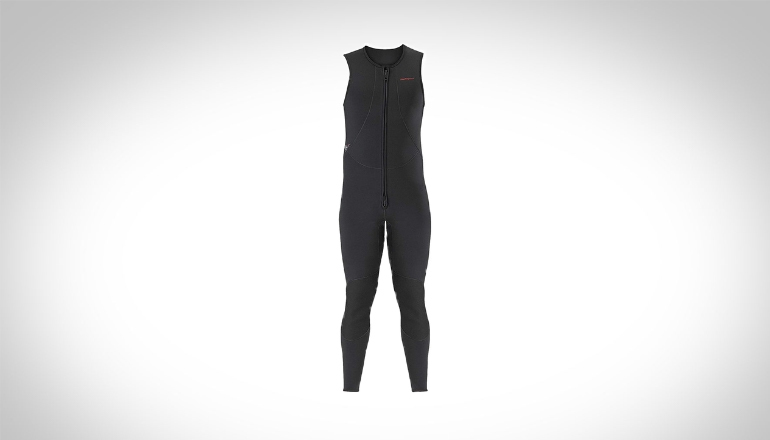
Stohlquist Men Rapid John Wetsuit
Stohlequist’s Rapid is a Jhon wetsuit for men. This Jhon suit can be used for kayaking, rafting, canoeing, and stand-up paddleboarding. The 3mm super-stretch neoprene jane offers a great amount of thermal protection. Throughout the suit, it features waterproof glued and blind-stitched seams. As a result, the wetsuit offers a great amount of warmth.
The reinforced SupraTex knees and seat adds high durability and abrasion resistance. The relief zippers feature elastic zipper locks with non-corrosive YKK zippers. As a kayaker, you will need to move your arms a lot. This kayak wet suit comes with extra-wide armholes that allow the wearer to move their hands with ease. Stohlquist used high-quality materials to make this wetsuit. In a nutshell, this is a great kayak wetsuit to tackle the cold waters.
Pros:
- 3mm Super-stretch neoprene for great thermal protection
- Glued and blind-stitched seams offer excellent warmth
- Available in different sizes
- Relief zipper with elastic zipper lock available
- Extra-wide armholes allow easy movement of hands
- Integrated SupraTex knees and seat offers great durability with abrasion resistance
Cons:
- Some may not like the snug fit

~Kayaking wetsuits for women~
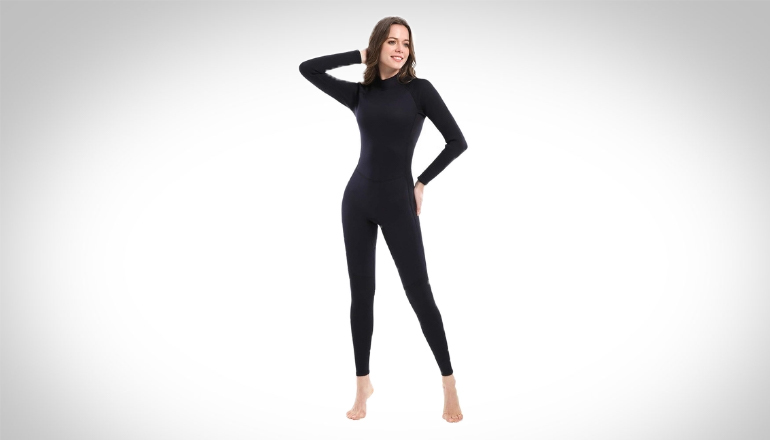
Dark Lightning Premium CR Neoprene Wetsuit
Dark Lightning’s Premium CR Neoprene wetsuit is an excellent option for both men and women. It comes with 90% Neoprene with 10% Elastane nylon which makes it thick and helps to keep warm. It comes with 3/2 mm and 5/4 design. The 3/2 mm design is suitable for amateurs and the suggested water temperature is 59 °F +. On the other hand, the 5/4 mm design is ideal for water temperatures of 46 °F – 55 °F.
CR neoprene is considered the best material for the diving wetsuit. Unlike the SBR, CR neoprene is super stretchy to help you have flexible movement under the water. Also, CR neoprene offers greater thermal resistance than traditional materials. If you are going to do kayak diving, it’s improved press resistance will come handy. On top of that, this kayak wet suit for women comes at a very reasonable price.
Pros:
- Premium CR neoprene used
- 3/2 mm design: suggested water temperatures of 59 °F +
- 5/4 mm design: suggested water temperatures of 46 °F – 55 °F
- Great fitting with protection
- Available in different sizes
- Super stretchy: offers great flexibility in movements
- Great thermal resistance
- CR material is stable
Cons:
- Pull zipper is small. So, sometimes pulling is painful

~Kayaking Wetsuit for Kids~

NeoSport Wetsuits Youth
Who doesn’t love kids? Right? If you want to introduce your child to water sports, you may consider getting a wetsuit for him/her. If you are taking your kid to tandem kayaking, this wetsuit is a great choice for them. This unisex kids wetsuit comes in several colors and sizes to perfectly fit your kid. It’s an excellent wetsuit to keep your kid protected from sun exposure with a 50+ UV shield.
Besides kayaking, your kid can use it at the beach, lake, and pool too. Though it provides some buoyancy, it is not a PFD device. It features an easy to get in back zip design to let them use it without the help of parents. What’s more, it is very cheap.
Pros:
- 50+ UV Shield
- Easy to get in and out design
- Provides inherent buoyancy
- Can be used for the lake, pool, and beach too
- Low price
- Several colors and sizes
Cons:
- Doesn’t cover the full body

Why you should buy a wetsuit for kayaking?
Investing in a wetsuit for kayaking is essential for several reasons, particularly when it comes to safety, comfort, and overall performance. Here’s why you should consider owning one:
1. Protection from Cold Water
Water temperatures can drop quickly, even in warmer climates, and cold water exposure can lead to hypothermia. A wetsuit provides an insulating layer that helps retain your body heat, keeping you warm in cooler waters. This is especially important for kayakers who may be exposed to splashes, wind, or sudden changes in weather.
2. Enhanced Comfort and Flexibility
Wetsuits are designed with materials like neoprene, which not only insulates but also offers flexibility. This ensures that your movements are unrestricted, allowing for smooth paddling. The snug fit of a wetsuit reduces friction, helping to prevent chafing or irritation during long hours on the water.
3. Increased Buoyancy
Neoprene naturally increases buoyancy, which can help you stay afloat if you happen to capsize. While a wetsuit isn’t a substitute for a personal flotation device (PFD), the added buoyancy provides an extra layer of safety in the water.
4. UV Protection
Many wetsuits offer built-in UV protection, shielding your skin from harmful sun exposure during long kayaking trips. This can be particularly beneficial when paddling in open waters or sunny conditions where you’re exposed to UV rays for extended periods.
5. Versatility
A wetsuit isn’t just for cold water kayaking. It can be useful in a variety of conditions, including in warmer waters where it helps protect your skin from the sun, wind, and abrasions from rough surfaces like rocks or sand. Having a wetsuit means you’re prepared for diverse environments and weather conditions.
6. Durability
Wetsuits are built to last, offering durability against wear and tear that kayakers often face. Whether you’re scraping against rocks or dealing with rough waters, a wetsuit provides an extra layer of protection, prolonging your gear’s life and keeping you safe.
In short, a wetsuit is a valuable piece of equipment that enhances your kayaking experience by providing warmth, comfort, and protection. It’s an investment that will pay off whether you’re tackling challenging waters or enjoying a leisurely paddle.
Why use a Wetsuit?
Wetsuits are used for a variety of water-based activities, such as surfing, scuba diving, and triathlons. They are designed to keep the wearer warm in cold water and provide protection from the sun, wind, and other environmental factors. Wetsuits are made of neoprene, which is a type of synthetic rubber that is resistant to water and provides insulation. The suit works by trapping a thin layer of water between the skin and the wetsuit. The body’s heat warms the water, and the wetsuit’s insulation helps keep the warmth. Wetsuits also provide some buoyancy and protection against abrasion and jellyfish stings.
These best kayaking wetsuits will help you keep yourself warm in/on the water. However, you need to understand that these wetsuits have a neoprene thickness level. Choose the best wetsuit for yourself by checking their temperature range adaptability in the chart above. If you follow our guide above you will be able to get the best one for yourselves.
How To Choose A Wetsuit for Kayaking
When choosing the best wetsuit for kayaking, there are several key factors to consider to ensure both comfort and performance. Here’s what to look for:
1. Thickness
The thickness of a wetsuit is crucial as it determines how much insulation you’ll get. For kayaking, the ideal wetsuit thickness depends on the water temperature:
- Cold Water (50°F/10°C or below): Opt for a 5/4mm or 4/3mm wetsuit to stay warm in frigid waters.
- Mild Water (50-65°F/10-18°C): A 3/2mm wetsuit offers a balance of warmth and flexibility.
- Warm Water (65°F/18°C and above): A 2mm or 1.5mm wetsuit or even a wetsuit top may suffice, providing lightweight protection.
2. Material
Wetsuits are typically made from neoprene, which provides insulation by trapping a thin layer of water between your body and the suit. Look for:
- Stretchy Neoprene: Provides better movement for paddling and maneuvering.
- Smoothskin Neoprene: Offers excellent wind resistance, which can be beneficial in exposed conditions.
3. Fit and Comfort
A well-fitting wetsuit is vital for kayaking. It should be snug but not too tight, ensuring freedom of movement, particularly around the shoulders and arms for paddling. Be sure the wetsuit doesn’t cause chafing or restrict circulation. Also, consider a wetsuit with reinforced knee or elbow areas for durability.
4. Style and Zipper Placement
- Full Suit: Best for colder conditions, offering maximum coverage.
- Shorty Wetsuit: Suitable for warmer waters, providing flexibility and comfort.
- Front Zip vs. Back Zip: Front zippers offer better flexibility, while back zippers are easier to put on. There are also zip-free wetsuits that enhance comfort and reduce potential water leakage.
5. Seam Construction
The type of seams in a wetsuit impacts its warmth and durability:
- Flatlock Seams: Found in cheaper wetsuits, flatlock seams are durable but let water in, making them ideal for warm conditions.
- Glued and Blindstitched Seams: These seams are watertight, making them perfect for cold water as they prevent water from entering the suit.
6. Additional Features
- Thermal Linings: Some wetsuits come with a fleece-like lining for extra warmth.
- Reinforced Panels: Look for reinforced panels on high-wear areas like knees and elbows for added durability.
- Waterproof Cuffs and Necks: Help prevent water from flushing into the wetsuit.
7. Personal Considerations
If you have specific needs like UV protection or are prone to cold hands and feet, consider wetsuits that offer additional features like sun protection or built-in insulation for extremities.
By focusing on these factors, you’ll be able to choose a wetsuit that keeps you comfortable, protected, and agile during your kayaking adventures.
Finding the right wetsuit for kayaking in 2025 comes down to understanding your specific needs based on water conditions, climate, and comfort preferences. With advancements in neoprene technology and wetsuit design, there are options to suit every kayaker, whether you’re tackling cold waters or enjoying warm-weather paddles. By considering factors like thickness, material, fit, and additional features, you’ll be well-prepared for a safe and enjoyable kayaking experience.

Afsar is an avid kayak blogger born near the coast. He has a passion for kayaking and started as a child. He has paddled in various conditions and locations and promotes responsible kayaking. Afsar’s blog is widely read, and they are a respected voice in the kayaking community, offering valuable content on kayaking trips, gear, tips, and tricks. Afsar collaborates with other bloggers and brands and continues to inspire others through their writing and social media.

